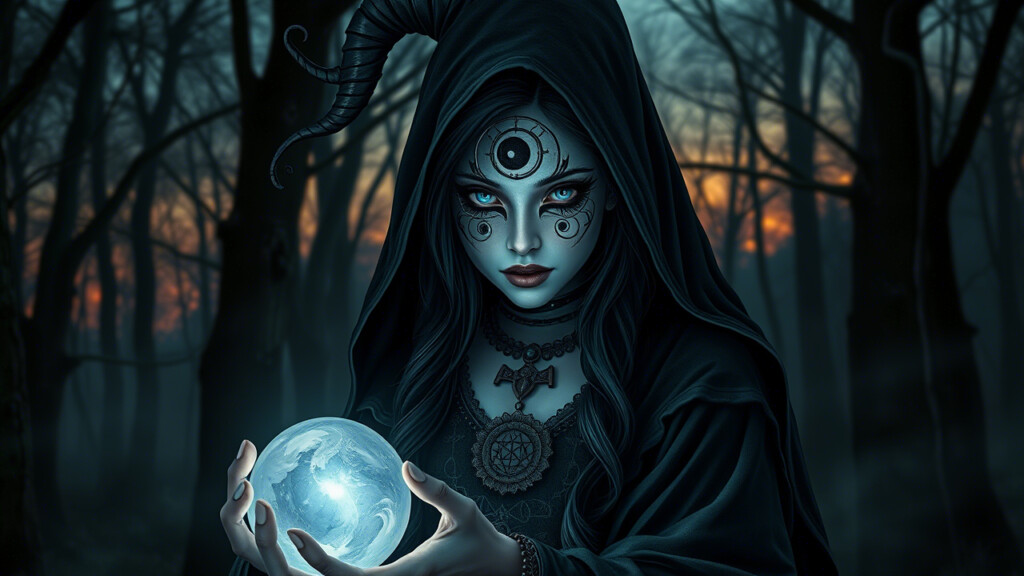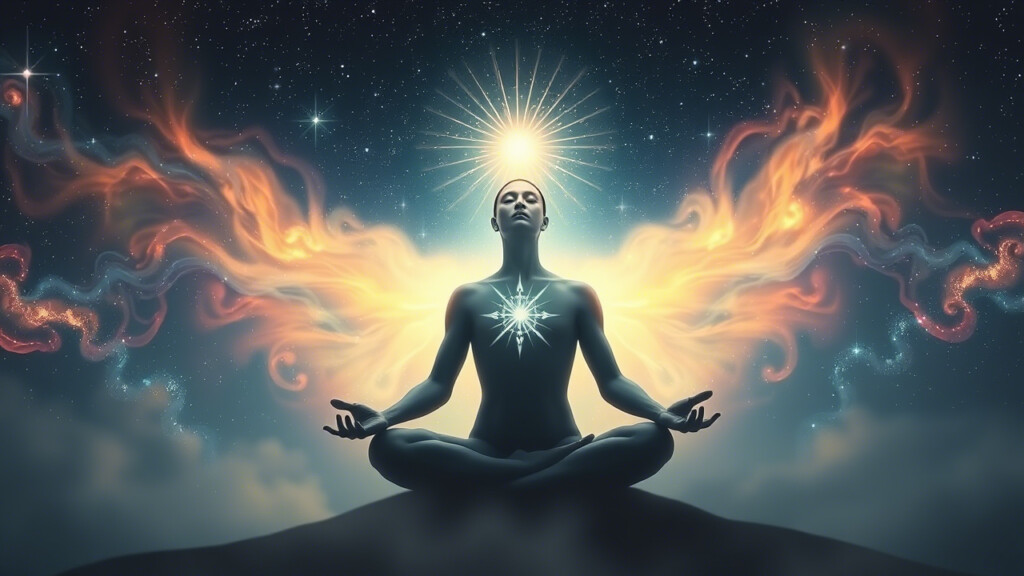The third eye—also known as the yin-yang eye or the celestial eye—is a concept found in many cultures and religions. It is believed to be a gateway to intuition, spirituality, and the ability to perceive realities beyond ordinary vision.

In Hindu and Buddhist traditions, it is closely linked to the Ajna chakra, located at the center of the forehead, where wisdom and the sixth sense converge. This mystical point is believed to grant humans the ability to connect with the universe, perceive spirits, and witness ghosts and wandering souls. Science, however, presents a different perspective: it sees this phenomenon as nothing more than a function of the brain, with the pineal gland secreting DMT, a compound that induces altered states of consciousness. So, what is the truth behind this mysterious experience?
Scientific studies explain this phenomenon as follows:
The pineal gland, a small structure in the brain, can produce DMT—a compound linked to hallucinations, creating visions of invisible entities or alternate dimensions, according to Dr. Rick Strassman.
The sixth sense, also known as intuition, may actually arise from a much more scientific process. A 2016 study from Northwestern University found that our brain can perceive information before we become consciously aware of it. In other words, you may not actually “know in advance,” but rather, your brain has processed data from the environment so quickly that it feels like a sixth sense.
Confirmation bias also plays an important role. When an image from the third eye coincides with a real event, people tend to believe it was a prophecy while ignoring countless inaccuracies.
From a scientific standpoint, this is a combination of brain chemistry and subconscious information processing. Sounds simple, but who hasn’t wondered if there’s more to it, right?
However, science has yet to fully explain the recorded accounts. Take the case of Helena Blavatsky, a 19th-century mystic. After training in Tibet, she claimed to have opened her third eye, allowing her to see invisible beings and predict the future.
In 1878, she placed her hand on a closed book and accurately read its contents in front of many scholars. On another occasion, she sent a letter warning about a train accident to journalist A.P. Sinnett, and the incident occurred exactly as predicted two weeks later.
Ingo Swann, a psychic who collaborated with the CIA in the Stargate Project, also gained attention when he accurately described Jupiter’s features before NASA confirmed them—he emphasized that this was not physical vision but a different form of perception. Gopi Krishna, a researcher of kundalini energy, recounted a terrifying experience: after deep meditation, he saw strange lights and unexpected images, as if being pulled into another reality, leaving him sleepless for days.
These cases are not just hearsay but have been documented in historical records. However, doubts remain that they might be products of imagination or fraud.
Science provides explanations for these phenomena:
DMT-induced hallucinations: The DMT compound in the pineal gland may cause experiences similar to those described by Blavatsky and Gopi Krishna—a chemical reaction rather than a spiritual vision.
Distorted memory: According to psychologist Elizabeth Loftus, memory can be reconstructed after an event, meaning Blavatsky or Swann might have unintentionally “adjusted” their stories to fit reality.
Subconscious processing: Swann may have absorbed information from his surroundings without realizing it and later reproduced it through mental imagery, creating a sense of the supernatural.
These explanations sound quite reasonable, to be fair. But then, why doesn’t everyone see such things? Why are their correct predictions sometimes so precise that they send chills down our spine? Even if we doubt their authenticity, these stories still make us stop and think—it’s not so easy to dismiss them, don’t you agree?

Meanwhile, Eastern traditions view the third eye through a different lens:
Ajna Chakra: According to Hinduism and Buddhism, this is the center of enlightenment, where humans transcend material limitations to communicate with the soul and the universe—like Tibetan monks who spend their lives meditating to awaken it.
Spiritual risk: Gopi Krishna described the third eye as a double-edged sword—it grants awareness but can also drag a person into a state of chaos if not controlled.
Metaphysical connection: Blavatsky believed she didn’t just see but also traveled to other realms, an ability beyond conventional explanations.
Science sees this as a product of the brain and coincidences. Eastern spirituality sees it as a gateway to enlightenment—or sometimes, a curse from the unseen world.
The experiences of Blavatsky, Swann, and Gopi Krishna straddle that fine line, challenging both laboratory research and the cold Tibetan monasteries. So, what do you think? A biological phenomenon, a series of lucky coincidences, or does the third eye truly exist to reveal a world beyond our understanding?
